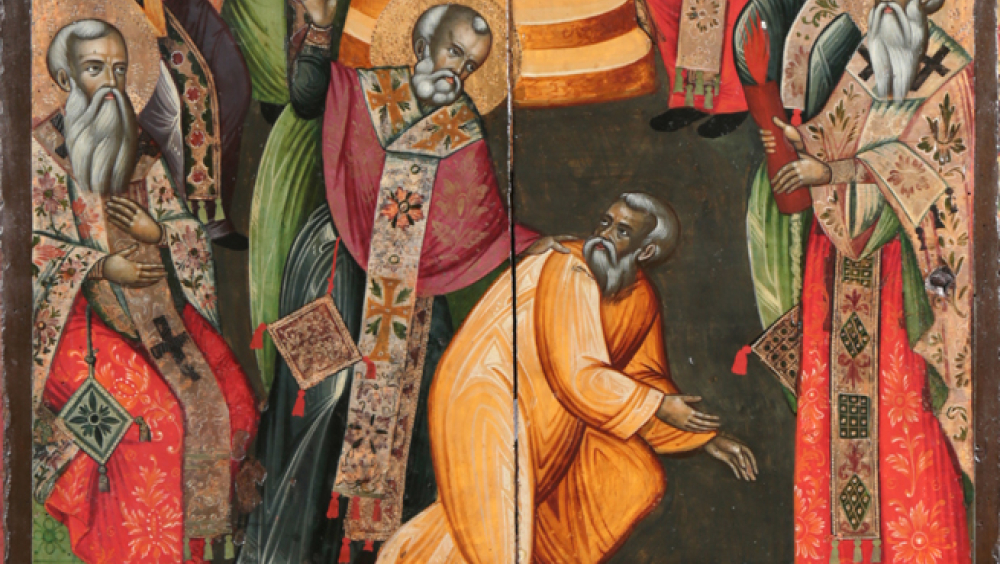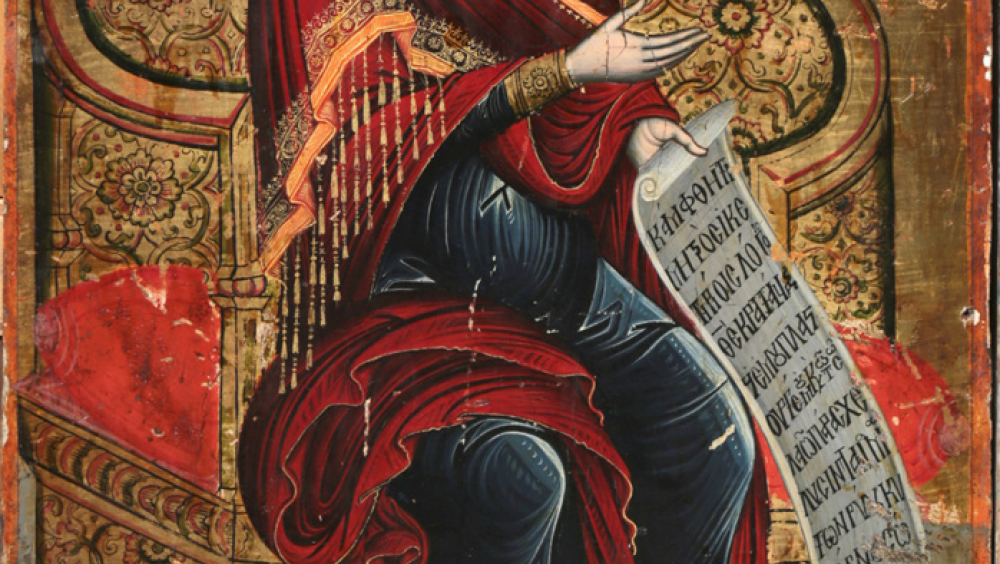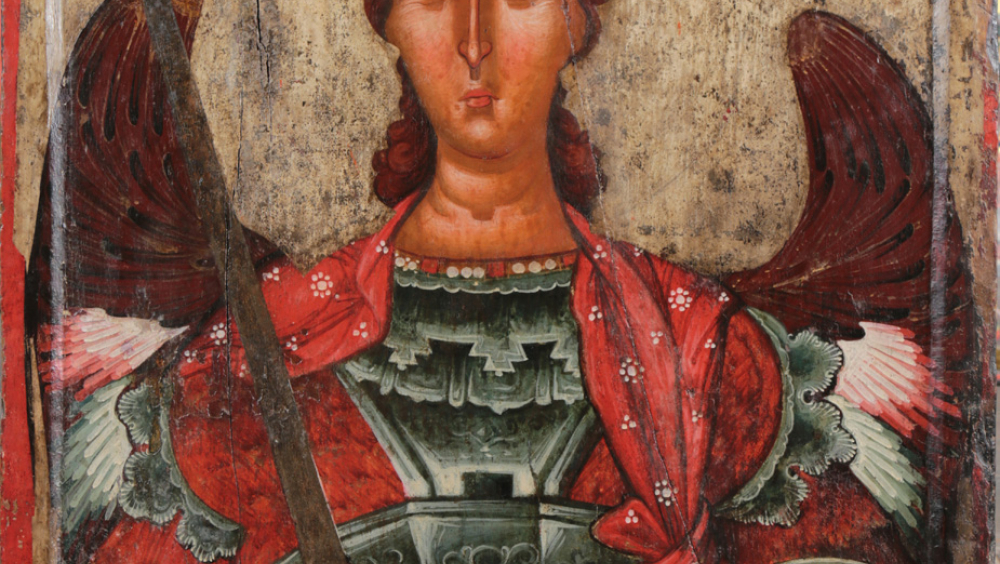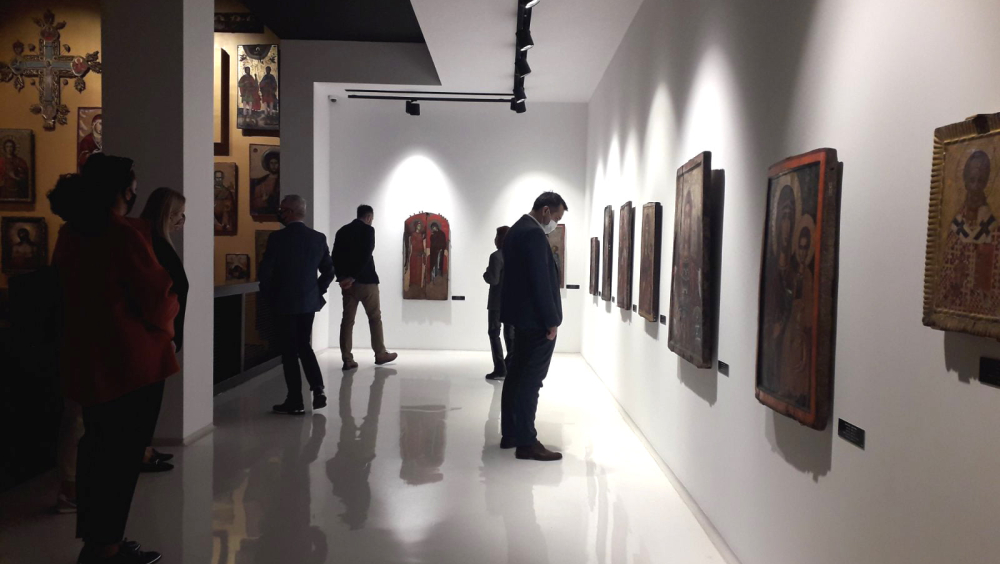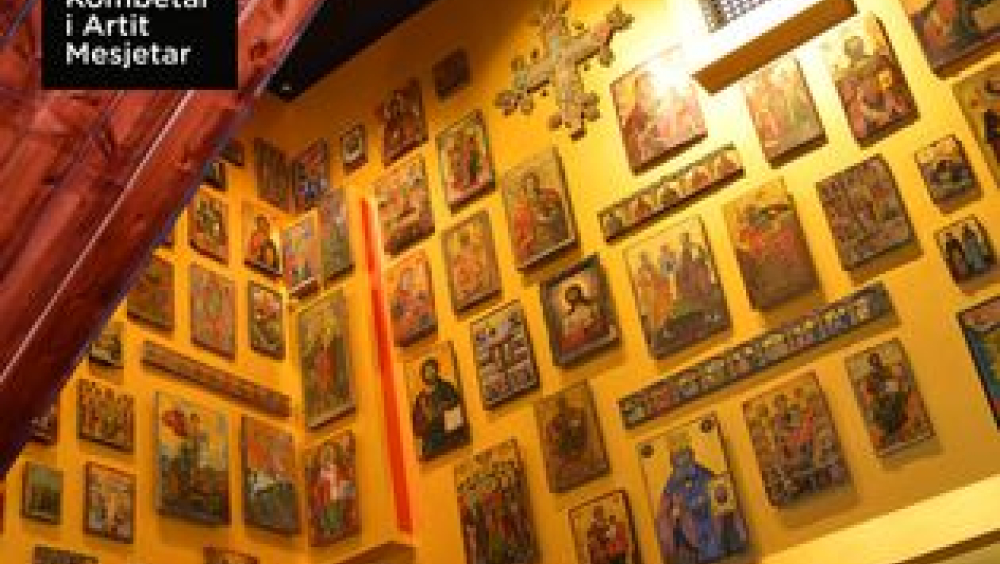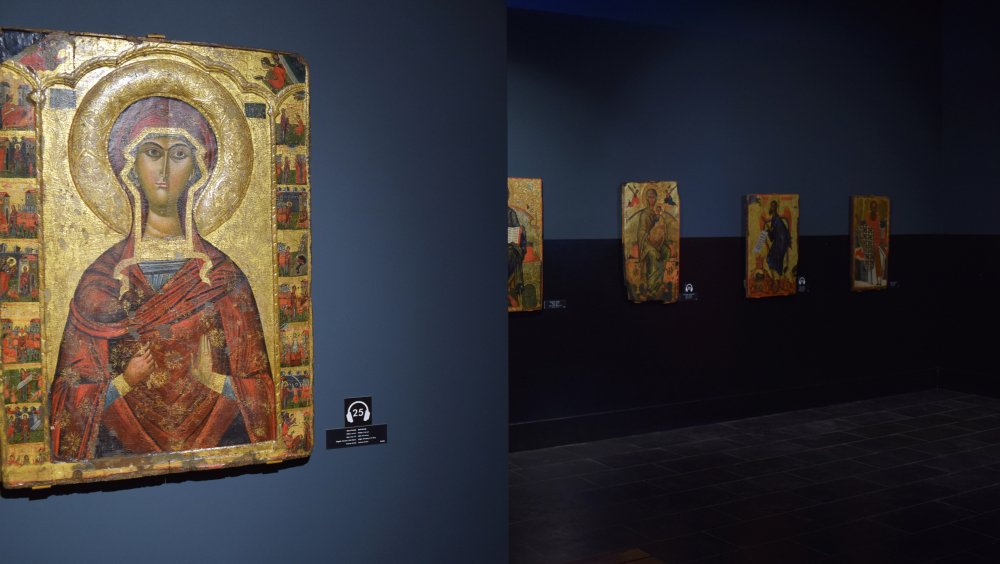The story of surviving and saving an extraordinary collection NMMA – MKAM
The story of the creation of a large and extraordinary collection of religious icons, which, to save them from loss and destruction, were saved and gathered on the roof of one of the most important cathedrals in the city of Korça, Albania, "The Life-Giving Source" in the name of cultural heritage and the creation of National Museum of Medieval Art, which preserves, exhibits, restores and conserves these objects since 1980.
The National museum of Medieval Art was first established in 1980, comprising one of the richest collections of Middle Age, including Byzantine and post-byzantine art, as well other non religious objects. There around 8200 objects, 6400 are icons, which are enlisted in its inventory and displaying shelves, other objects like stone fragments from basilicas, carved wood, fragments of iconostasis, metal and cloth objects, religious objects and not religious.
The museum display a collection of 400 hundred icons at the permanent exhibition. They have been selected as the most valuables, important works, various periods and artists, many of them anonymous but some of them are from well named artists–iconographers in Albania and also in the region.
Albania went through a long medieval period, experiencing different wars and struggling to survive through difficult times, where different ruling powers tried to assimilate the country and underestimate cultural heritage, including dictatorial times. Here is included the long years (500 years), after the falling of byzantine Empire, and the occupation of the ottomans. These icons are the best example of the story of survival not only during the period of Ottoman occupation where the people of this country were forced to change their faith and rituals in order to lead a normal life, or above all the ongoing war for independence, but also in the most savage destruction of the dictatorship, where faith in God was replaced by faith in the Communist Party and its dictator.
The collection of the NMMA is one of the largest collections of byzantine and post-byzantine art in the world due to the circumstances that was created.
In the 1967 everything that belongs to the religion has been abandoned, destroyed, burned down, looted, along with their contents, in the name of the “Communist Atheism” which prohibited all the forms of the religious expressions. This period has been the most difficult and the savage of the 20th century, and the worst iconoclasm.
During the dictatorial time, in a period where religion and its belief were continuously under attack, destroying religious objects was a primary aim, a few years after 1967, a group of some researchers, academics, at a great personal risk, travel all over Albania, trying to save from the destruction all the religious temples, in the name of the Cultural Heritage. Theofan Popa,(whose family were persecuted after a few years) ,Victori Puzanova, Dhorka Dhamo, etc. were some of the heroes that identify the churches, the periods, the inscriptions, the authors of the frescos and the icons, they write a history about the religious activities and the way of living through centuries, and they try to collect and preserve all the religious items, especially icons.
These objects has been placed in the former cathedral in the Korça town as a center of the major part of the churches they originated from. It’s 1980, when the National Museum of Medieval Arts was sheltered under the roofs of one of the most important churches in the city of Korça, “The Life –Giving-Spring”, which played a vital role in preserving objects of such an important cultural heritage for the people of this country.
There were the same heroes that added a lot of the ethnography objects, dresses, in the inventory and the exhibitions of the museum with the purpose of covering the largest collection of icons and other religious objects and they also named the museum “The National Museum of Medieval Art”, (still today), to keep the collections safe and to have the possibility to show to the common people and the youth of every generation that our country has a religious history, a byzantine tradition, and to see these objects like a representative of the artistic wealth, cultural heritage and to write about the history of art.
The museum display a collection of 400 hundred icons at the permanent exhibition. They have been selected as the most valuables, important works, various periods and artists, many of them anonymous but some of them are from well named artists–iconographers in Albania and also in the region. The other part of the objects and icons are kept safe at the museum inventory. During the ottoman occupation, the byzantine culture, the orthodox faith, and development, the post – byzantine period was very important for Albania.
Starting from 2016, the Museum is accommodated in a contemporary building, which provides the necessary required standards for a proper exhibition, including preserving and restoration measures for storing such a valuable cultural treasury. Medieval art is reflected in harmony with the contemporary architecture. Byzantine colors conquer together with mystics of another world, making the experience in the museum quite special and unforgettable.
Each icon in the museum collection has its own significant history. One history of survival during the Ottoman periods and during dictatorship.
- Will be a selection of 29 icons for our story to be showcased, and each icon has a different story to tell.
- Exhibition of selected icons with the each description of the history, with own history of production and survival history over the centuries until the restoration and the exhibition in the museum.
- Historians and witnesses will refer about the museum history, of the history of byzantine art survivals.
- This exhibition will be exposed not only in Korça, in the NMMA, but also in other cities like in Tirana, with a collaboration of the museums, like ex. “House of Leaves” and the Onufri Museum, in Berat or other cities, or with other similar museums, throughout Europe.
- The exhibitions will be accompanied by workshops and lectures, various educational activities
NMMA holds the largest collection of icons from the dictatorship. With the reason and desire to save these relics, not only because they represented the spiritual and religious part of a community or the history of a people, which has been the victim of continuous wars and invasions, but also as an artistic part and the history of art, surviving during the medieval centuries and above all as part of the cultural heritage.
Precisely these icons removed from churches, their destination was destruction, burning and denial, donated or collected by different families, tell about the war, that some heroes. researchers and academics, risked their lives and collected them, preserving the name of cultural heritage. Now they are not only part of the Albanian cultural heritage but part of the European and world cultural heritage.
A journey into divine art is the theme of icons which present not only their sanctity, the beauty of Byzantine and post-Byzantine painting, different authors and how the style of icon painting has evolved over the centuries, but at the same time they carry a story of survival and salvation from loss and destruction.
Through this journey through the centuries we show how we have always been part of the European cultural journey of a cultural heritage, walking step by step with it, being influenced by it and giving Europe at the same time a testimony that we have always been there, despite the difficulties and struggles for freedom and identity. This is a story of art, cultural heritage and faith that have survived through the centuries and deserved to be proclaimed and made known.
This exhibition will be exposed not only in Korça, in the NMMA, Albania or other Albanian cities, but also with other similar museums, throughout Europe.
